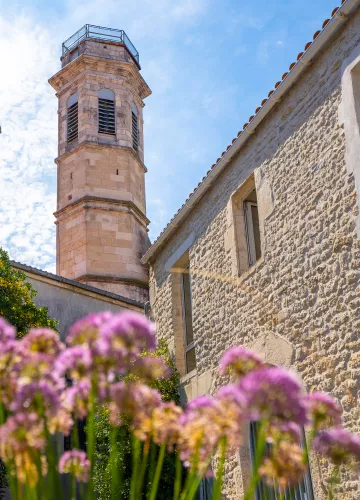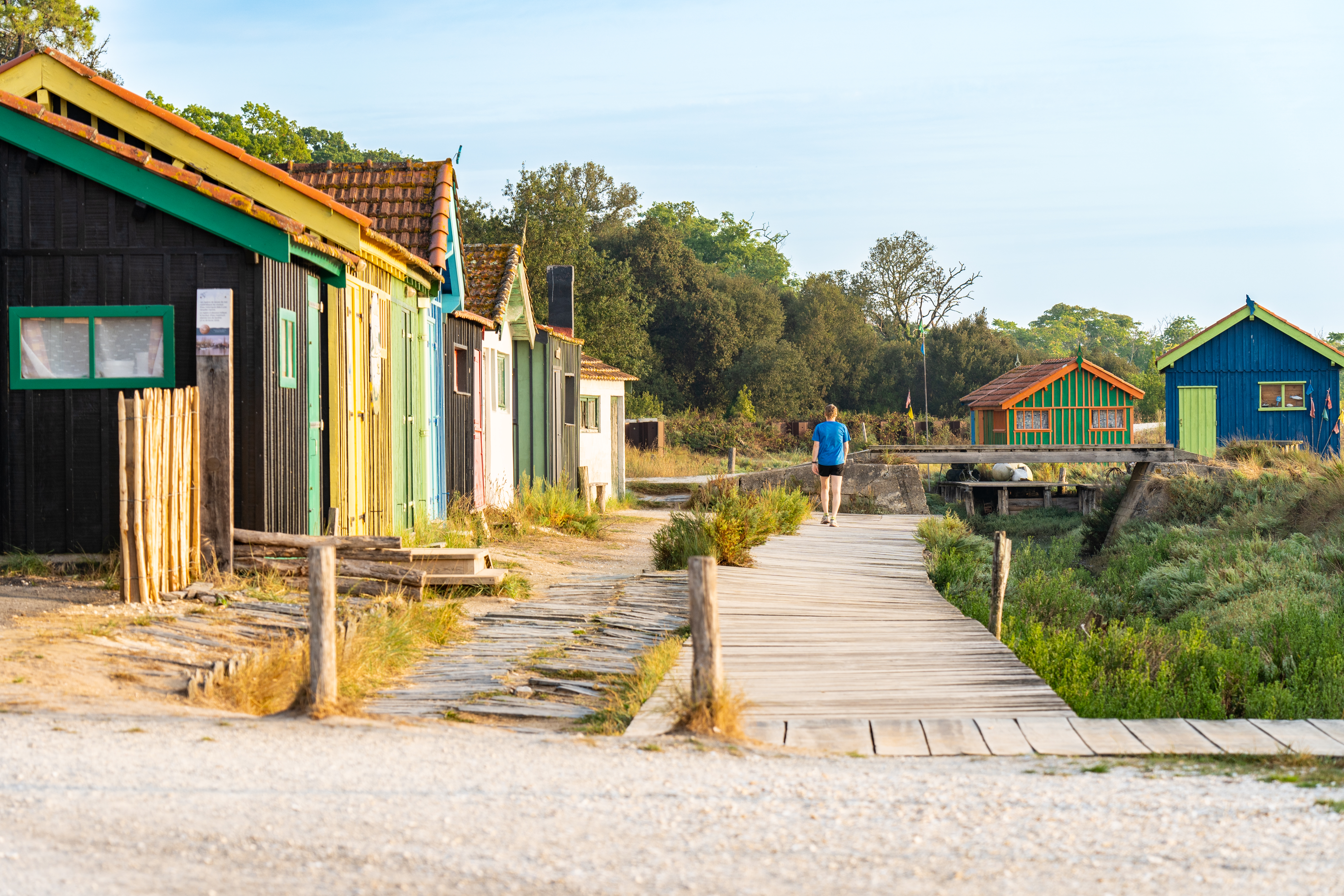
Saint-Pierre d'Oléron
Saint-Pierre d'Oléron, the "capital" of the Ile d'Oléron, owes its development to its commercial vocation. Rich in history and heritage, it was here that the writer Pierre Loti chose to rest. A remarkable site, the Eguille marsh is a protected natural area, wild and unusual. The remains of the salt marshes, along with the vineyards, bear witness to a flourishing economic activity. Its fishing port, La Cotinière, is a must-see, especially when its multicolored flotilla arrives before the auction.
The heart of the island...
At the heart of the island, Saint-Pierre d'Oléron is a dynamic, lively town where life is good all year round. Take a stroll through the town center, its pedestrian streets and discover its weekly markets, its many stores of all kinds (fashion, decoration, souvenirs, delicatessen...), its cinema, its museum... In short, Saint-Pierre d'Oléron is the ideal vacation spot for those who want to combine the advantages of the town center with those of the seaside.
Saint-Pierre d'Oléron is an ideal place for shopping enthusiasts, but will also delight heritage lovers with, among other things:
- Château de Bonnemie : The Château de Bonnemie is a former seigniorial residence of the Le Berton de Bonnemie family, with the oldest part dating back to the 14th century. Now owned by the municipality, it stands in the middle of a superb park that invites you to stroll and daydream.
- La Lanterne des Morts (The Lantern of the Dead) : France's tallest of the dozen or so existing lanterns. Dating from the 12th century, it was built in the middle of the town's former medieval cemetery. At its summit, the lantern housed a flame. An elder explains that it was there to "commemorate the souls of the dead" and doesn't fail to add: "and warn the living!" Let's hear it.
- Kiosk : Built in 1899, the year the first municipal brass bands appeared, this is the only one to be seen in any of the island's villages.
- 17th-century church : Rebuilt in 1623 on the ruins of a Romanesque church destroyed during the Wars of Religion, this church is in the "Counter-Reformation" style. Its very high hexagonal bell tower, erected in 1776, made it an ideal navigational landmark. From up there, you can enjoy an exceptional panorama. Near the church, on the facade of a restaurant, you can see the old sign of the Renaissance hostellerie.
- La Maison Pierre Loti : The island, where he spent his summer vacations as a child, was a source of inspiration for this great writer, academician and naval officer. Although he lived in Rochefort, it was in Saint-Pierre d'Oléron that he wished to be buried after his death. Since 1923, he has been laid to rest in the garden of the Maison des Aïeules. Sold by the maternal branch of his family, it was in 1899 that Pierre Loti bought it and gave it its name. A plaque affixed to the front of the house, on rue Pierre Loti, reminds visitors of this.

Villages from east to west
Saint-Pierre d'Oléron is also 29 villages and hamlets, with narrow streets, wells and hollyhocks... From west to east, the landscapes are different, from the fishermen's and winegrowers' villages on the "Grand'côte" to the villages in the marshes to the east. Each has its own unique identity: winding alleys lined with Roses Trémières, low houses with rubble stone walls, wells and bassées...
West side:
Discover La Menounière, La Chefmalière or La Biroire, small villages nestled behind the dune for protection from the wind, with traditional architecture. Further south, Matha and Saint-Séverin, with their pretty little beaches of fine sand facing the Atlantic Ocean. Ideal for a variety of seaside activities (relaxation, walking, water sports...). There's something for everyone! Le Marais Doux, a hamlet set in a forested area where walks and bike rides will guide you to the port of La Cotinière, the town center and the beaches.
In the center :
The villages of La Boirie, in the heart of the marshes, and Arceau, with its channel, bear witness to the work of man over the centuries to harmonize land and sea. A remarkable site, the Eguille marsh is a protected natural area, wild and unusual. Criss-crossed by a cycle path and hiking trails, the marsh also offers the chance to enjoy the tranquility of the place on a Stand Up Paddle or canoe trip.

East side:
Criss-cross the commune along the Route de l'Eguille, which takes you to one of the most beautiful sites on the Ile d'Oléron: Fort Royer. Here, land and sea mingle. Fresh and salt water unite, forming a veritable sanctuary for flora and fauna. The exceptional site of Fort Royer, in the Moëze-Oléron nature reserve, offers a typical landscape of multicolored oyster huts amidst fields of oyster beds. Guided tours are available to learn all about the work of these "farmers of the sea".